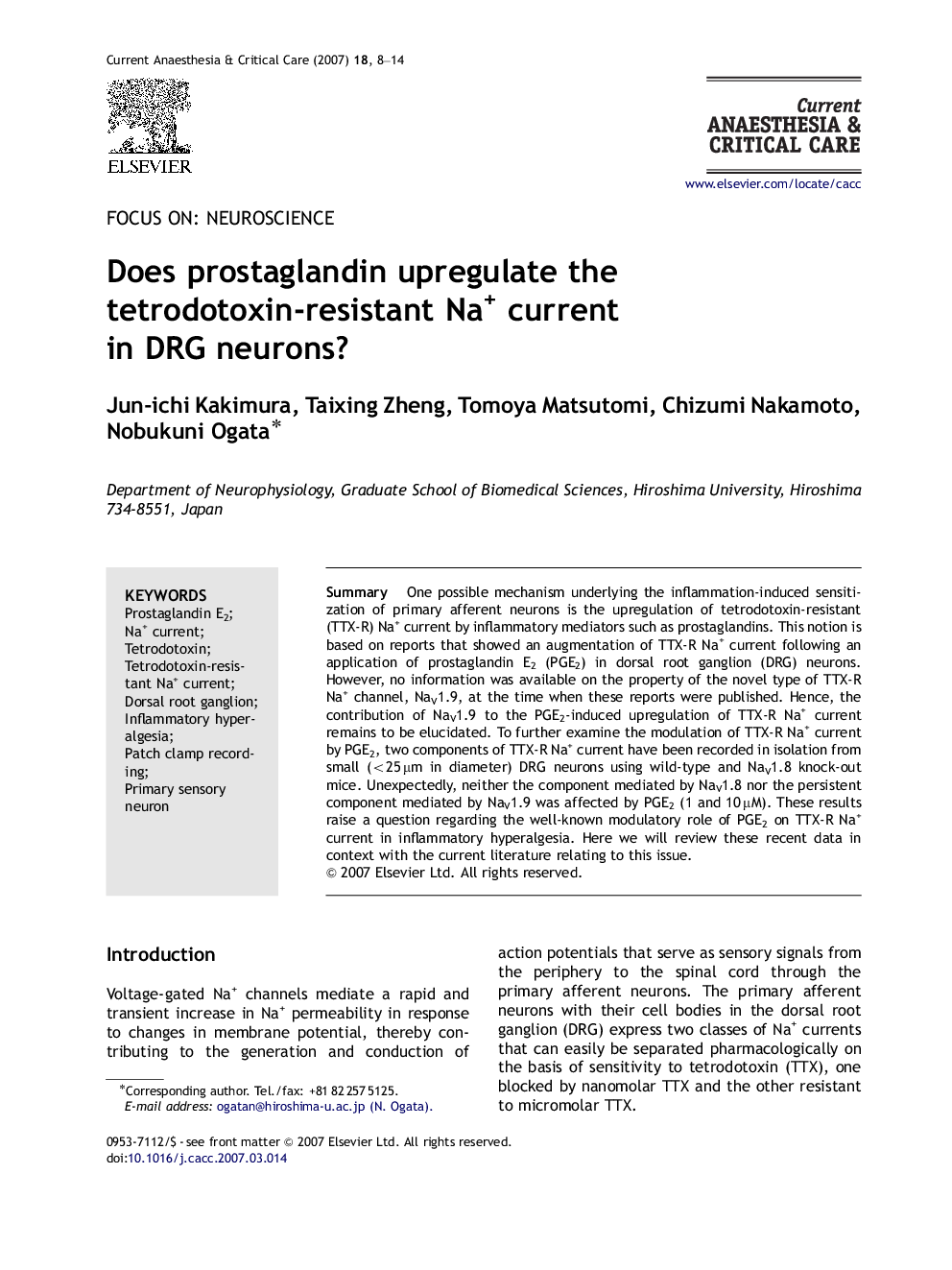| Article ID | Journal | Published Year | Pages | File Type |
|---|---|---|---|---|
| 2607858 | Current Anaesthesia & Critical Care | 2007 | 7 Pages |
Abstract
One possible mechanism underlying the inflammation-induced sensitization of primary afferent neurons is the upregulation of tetrodotoxin-resistant (TTX-R) Na+ current by inflammatory mediators such as prostaglandins. This notion is based on reports that showed an augmentation of TTX-R Na+ current following an application of prostaglandin E2 (PGE2) in dorsal root ganglion (DRG) neurons. However, no information was available on the property of the novel type of TTX-R Na+ channel, NaV1.9, at the time when these reports were published. Hence, the contribution of NaV1.9 to the PGE2-induced upregulation of TTX-R Na+ current remains to be elucidated. To further examine the modulation of TTX-R Na+ current by PGE2, two components of TTX-R Na+ current have been recorded in isolation from small (<25 μm in diameter) DRG neurons using wild-type and NaV1.8 knock-out mice. Unexpectedly, neither the component mediated by NaV1.8 nor the persistent component mediated by NaV1.9 was affected by PGE2 (1 and 10 μM). These results raise a question regarding the well-known modulatory role of PGE2 on TTX-R Na+ current in inflammatory hyperalgesia. Here we will review these recent data in context with the current literature relating to this issue.
Keywords
Related Topics
Health Sciences
Medicine and Dentistry
Anesthesiology and Pain Medicine
Authors
Jun-ichi Kakimura, Taixing Zheng, Tomoya Matsutomi, Chizumi Nakamoto, Nobukuni Ogata,
